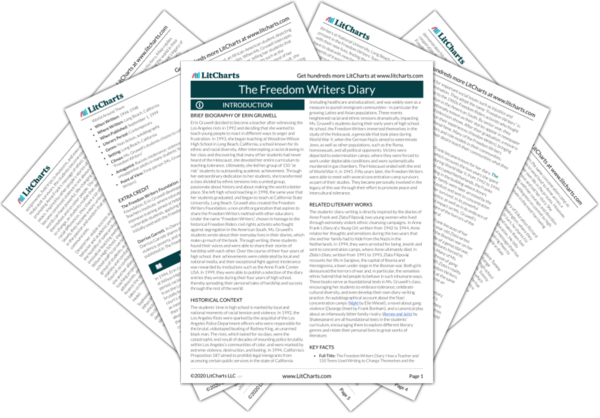After the news article is published,
Thomas Keneally, the author of the book that inspired the movie
Schindler’s List, invites Ms. Gruwell and her students to one of his university seminars—after which they receive an invitation from
Steven Spielberg himself, the director of the movie. Ms. Gruwell recalls that these artists were highly impressed by Ms. Gruwell’s class, admiring the students’ striking cultural and ethnic diversity as well as their academic achievements.
